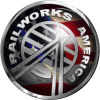How do I determine the scale of a track chart?
First unread post • 3 posts
• Page 1 of 1
How do I determine the scale of a track chart?
I'm still working on the route that I mentioned a few posts ago, and I'm reaching my wits end when it comes to track elevation. I recently read a tutorial on here about how to lay track from a track chart, but it mentions knowing what the scale of the chart is. Since the charts I'm using don't appear to have a scale printed on them, I'm wondering if there is a way to determine what the scale is manually?
-

Brickrail782 - Posts: 624
- Joined: Fri Jul 07, 2017 6:47 am
- Location: Kansas City, KS
Re: How do I determine the scale of a track chart?
Hi,
The most common style of track charts used by American railroads is in my experience something similar to the one on the example below. Though there are big differences in how they are drawn and what information they contain and the one below might be one of the more detailed ones when it comes to track layout and infrastructure.
The key information for "reading" them is my experience the mile posts. They are usually drawn as vertical lines. Those can be a good starting point to find everything else you need to know -- where the curves are, how long they are, where gradients start and end, etc. I find it usually helpful to print the track chart so that I can use a ruler to measure stuff or draw on it with a pencil.
Or you can pick any other easily located spot -- useful guides are road crossings (when shown, like below), or simply a curve on the Google Earth overlay and put it in relation to the data you find on the track chart. And then again use the mile markers to calculate/measure/estimate the distances to other line features like gradient transitions, etc.
Cheers,
Michael
The most common style of track charts used by American railroads is in my experience something similar to the one on the example below. Though there are big differences in how they are drawn and what information they contain and the one below might be one of the more detailed ones when it comes to track layout and infrastructure.
The key information for "reading" them is my experience the mile posts. They are usually drawn as vertical lines. Those can be a good starting point to find everything else you need to know -- where the curves are, how long they are, where gradients start and end, etc. I find it usually helpful to print the track chart so that I can use a ruler to measure stuff or draw on it with a pencil.
Or you can pick any other easily located spot -- useful guides are road crossings (when shown, like below), or simply a curve on the Google Earth overlay and put it in relation to the data you find on the track chart. And then again use the mile markers to calculate/measure/estimate the distances to other line features like gradient transitions, etc.
Cheers,
Michael
You do not have the required permissions to view the files attached to this post.
-

GreatNortherner - Posts: 1586
- Joined: Sun Feb 15, 2009 11:19 am
- Location: Czech Republic
Re: How do I determine the scale of a track chart?
Funnily enough, not more than 10 minutes after I posted this, I realized that things like signals, bridges, and crossovers have a mile number attached to them. I think I've got an idea about how to do the measuring now, and I'll see about putting it into practice later today.
-

Brickrail782 - Posts: 624
- Joined: Fri Jul 07, 2017 6:47 am
- Location: Kansas City, KS
3 posts
• Page 1 of 1
Who is online
Users browsing this forum: PetalBot and 1 guest
